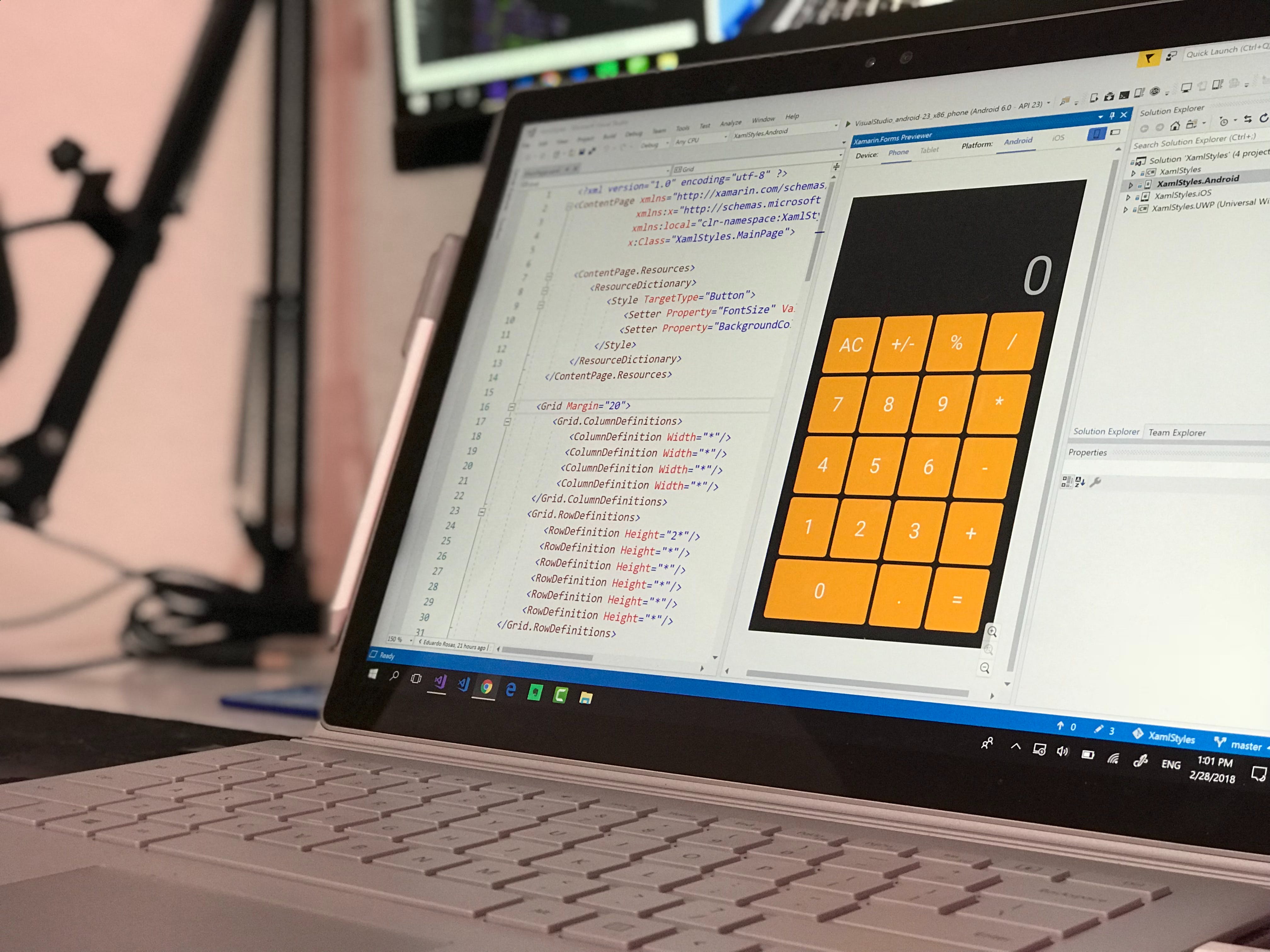What is Mobile App Development in Android? Explained!

In today’s digital era, mobile apps have become an integral part of our daily lives, providing unprecedented convenience and functionality. Mobile app development refers to the process of creating software applications that run on mobile devices. This burgeoning field has revolutionized how we interact with technology, enabling businesses to reach their customers directly and more efficiently.
The development process encompasses various stages, including ideation, design, development, testing, and deployment. It requires a deep understanding of different mobile platforms, user interfaces, and the unique challenges posed by mobile environments. Among these platforms, Android stands out due to its open-source nature and widespread adoption.
At Biz4Solutions, we specialize in crafting bespoke mobile applications tailored to meet the unique needs of our clients. Whether you are a startup looking to make a mark or an established enterprise seeking to enhance your digital presence, our team is dedicated to delivering solutions that drive success.
Understanding Android Development Basics

Developing for Android involves understanding its fundamental architecture and the tools required to create robust applications. Android, being an open-source operating system developed by Google, offers a versatile platform for developers due to its flexibility and extensive reach. The foundation of Android development lies in the use of the Java or Kotlin programming languages, with Kotlin gaining popularity due to its modern features and enhanced syntax.
The first step in Android development is setting up the development environment. This typically involves installing Android Studio, the official integrated development environment (IDE) for Android. Android Studio provides a comprehensive suite of tools for coding, debugging, and testing applications, making it indispensable for developers.
Next, developers need to become familiar with the Android Software Development Kit (SDK). The SDK includes a set of development tools such as libraries, a debugger, an emulator, and documentation that help streamline the app creation process. Additionally, understanding the Android application components—Activities, Services, Broadcast Receivers, and Content Providers—is crucial for building functional apps.
Finally, mastering the concepts of UI/UX design within Android is essential. This involves working with XML layouts, understanding the Material Design guidelines, and ensuring that the app provides an intuitive and engaging user experience. With a solid grasp of these basics, developers are well-equipped to embark on the journey of creating impactful Android applications.
Key Tools for Android Development

To excel in Android development, it’s essential to familiarize oneself with the key tools that streamline the process and enhance productivity. Among these tools, Android Studio stands out as the primary Integrated Development Environment (IDE) for Android. It offers a plethora of features such as a visual layout editor, APK analyzer, and real-time profilers, making it the go-to choice for developers.
Another indispensable tool is the Android Software Development Kit (SDK). The SDK provides a comprehensive set of development and debugging tools, libraries, and documentation, which are crucial for building Android applications. The SDK also includes an emulator, allowing developers to test their apps on various virtual devices before deploying them to physical hardware.
Version control is a critical aspect of any development process, and Git is the most widely used version control system among Android developers. Tools like GitHub and Bitbucket offer repositories to manage and collaborate on projects efficiently, ensuring that code changes are tracked and managed seamlessly.
For optimizing the user experience and ensuring that apps run smoothly across different devices, developers often use Firebase. Firebase provides a suite of cloud-based tools for real-time databases, authentication, crash reporting, and analytics, which help in building high-quality apps.
Lastly, Gradle is the build automation tool that simplifies the build process in Android Studio. It allows developers to manage dependencies and automate tasks, ensuring that the project is compiled and packaged correctly.
By leveraging these key tools, developers can significantly enhance their efficiency and create robust, scalable, and user-friendly Android applications.
Best Practices in Android Development

Adhering to best practices in Android development is crucial for creating high-quality, maintainable, and efficient mobile applications. One of the foremost practices is to follow the Model-View-ViewModel (MVVM) architectural pattern. This pattern separates the development of the graphical user interface from the business logic, making the codebase more modular and testable.
Another essential practice is to ensure responsive design. Android devices come in various screen sizes and resolutions, so using flexible layouts and avoiding hard-coded dimensions is vital. Tools like ConstraintLayout and density-independent pixels (dp) help achieve this flexibility.
Performance optimization is another critical aspect. Developers should minimize the use of memory and resources by employing techniques such as lazy loading, efficient use of background threads, and avoiding memory leaks with tools like LeakCanary. Additionally, using ProGuard for code obfuscation and compression can significantly enhance the app’s performance and security.
Security cannot be overlooked; hence, implementing best security practices is imperative. This includes using HTTPS for network communication, encrypting sensitive data, and employing secure authentication methods. Regularly updating dependencies and libraries to their latest versions also mitigates potential security vulnerabilities.
Testing is another cornerstone of best practices. Utilizing unit tests, integration tests, and automated UI tests ensures that the app functions as expected and helps catch bugs early in the development cycle. Tools like JUnit, Espresso, and Robolectric are invaluable for comprehensive testing.
By adhering to these best practices, developers can create robust, reliable, and user-friendly Android applications that stand the test of time and provide a superior user experience.
Common Challenges and Solutions
Developing Android applications comes with its own set of challenges, but with the right solutions, these can be effectively managed. One of the most common challenges is device fragmentation. The Android ecosystem includes a wide variety of devices with different screen sizes, OS versions, and hardware capabilities. To tackle this, developers should use responsive design principles and extensive testing across multiple devices and emulators. Tools like Firebase Test Lab can be extremely helpful for this purpose.
Another significant challenge is ensuring optimal performance. Apps that consume too much memory or battery can quickly lose users. Profiling tools such as Android Profiler and implementing best practices like efficient background processing with WorkManager or JobScheduler can help maintain performance levels.
Security is another critical concern. Vulnerabilities can expose sensitive user data and damage the app’s reputation. Developers should follow security best practices, such as using encrypted communication channels (HTTPS), storing sensitive data securely, and regularly updating libraries and dependencies to their latest versions. Employing tools like ProGuard for code obfuscation can also add an additional layer of security.
Maintaining a consistent user experience across different Android versions can be challenging due to API level differences. Using backward-compatibility libraries, such as AndroidX, allows developers to provide a more uniform experience across different Android versions.
Lastly, managing app updates and ensuring backward compatibility is crucial. Implementing feature flags can help roll out new features gradually, and using in-app update APIs ensures users have the latest version of the app with minimal friction.
By addressing these common challenges with the aforementioned solutions, developers can create more reliable, secure, and user-friendly Android applications.
Future Trends in Android Development

The landscape of Android development is ever-evolving, and staying ahead of future trends is essential for developers who want to create cutting-edge applications. One of the most significant trends is the increasing use of Kotlin, which has been officially supported by Google. Kotlin’s concise syntax and powerful features make it a preferred choice for modern Android development.
Another emerging trend is the adoption of Jetpack Compose, a modern toolkit for building native UIs. Jetpack Compose simplifies UI development with its declarative approach, allowing developers to create more dynamic and responsive interfaces efficiently.
Artificial Intelligence (AI) and Machine Learning (ML) are also becoming integral to Android apps. With tools like TensorFlow Lite and ML Kit, developers can integrate sophisticated AI and ML capabilities into their applications, enabling features like image recognition, natural language processing, and predictive analytics.
As 5G networks become more widespread, they are set to revolutionize the mobile app experience by providing faster data speeds and lower latency. This will enable more immersive and real-time applications, such as augmented reality (AR) and virtual reality (VR) experiences. Tools like ARCore are already making it easier for developers to create AR applications.
Furthermore, the trend towards modularization with Dynamic Delivery allows developers to deliver app features on-demand, reducing initial download sizes and improving user experience. This approach is particularly beneficial for large applications that offer a variety of functionalities.
Incorporating these future trends into your Android development practices can significantly enhance the capabilities and user experience of your apps. For more insights and professional assistance in navigating the future of Android development, visit biz4solutions.com.



